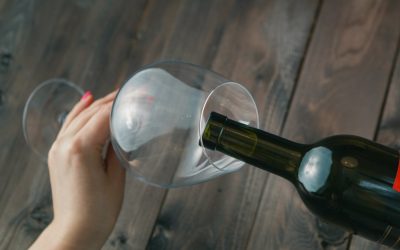Then, the author stopped prescribing disulfiram in late 1990s when naltrexone (ReVia® or Vivitrol®) became available. He told me and he could forget about alcohol drinking completely, and started to prepare and update his teaching slides of his lecture files for his class at a medical school. In Taiwan, naltrexone had been once unavailable till 2 years ago because only limited prescriptions made the pharmaceutical company to decide not to supply the drug for about 5 years. http://ynik.info/2014/01/31/poleznye_jady.html But naltrexone is currently available (M. C. Huang, personal communication, 2018). With time, and by practicing new responses, you’ll find that your urges to drink will lose strength, and you’ll gain confidence in your ability to deal with urges that may still arise at times. If you are having a very difficult time with urges, or do not make progress with the strategies in this activity after a few weeks, then consult a healthcare professional for support.
Foods That Can Help Curb Alcohol Cravings
Incorporating beneficial foods into your diet can support brain and body health, and potentially lessen the intensity of alcohol cravings. Antioxidant-rich fruits and vegetables, such as berries, leafy greens, and colorful bell peppers, are packed with vitamins, minerals, and phytochemicals that support brain health and reduce oxidative stress. This can help alleviate the physiological imbalances that contribute to alcohol cravings. It is important to note that while diet can play a role in curbing alcohol cravings, it is not a standalone solution. Seeking professional help, such as counseling or attending support groups, is crucial in addressing the underlying causes of alcohol addiction and developing effective coping mechanisms. A healthy diet may not only reduce the intensity of alcohol cravings, but it can also support overall mental and physical health – an important aspect of recovery for those struggling with alcohol misuse.
Medications that reduce cravings
Fortunately, most of the acute symptoms of withdrawal pass within a week or two of quitting. However, some people who quit an addiction find that certain withdrawal symptoms seem to go on and on. This is known as post-acute withdrawal syndrome (PAWS), and it can continue for weeks, months, or even years in some cases. Withdrawal symptoms can be a difficult aspect of overcoming addiction for both substance and behavioral addictions. With substance addictions, the physiological aspects of withdrawal can be extremely uncomfortable like a bad flu, or can even be life-threatening.
Mindfulness and Patience: Tools for the Journey
Alcohol cravings are often a significant obstacle for those seeking to reduce their alcohol consumption or achieve sobriety. These cravings can occur at any time and can be triggered by various factors, such as stress, social situations, or even certain foods. https://www.tehlit.ru/1lib_norma_doc/52/52693/index.htm As a peptide, opioid can stimulate inhibitory GABA neurotransmitter of interneuron in ventral tegmental area (VTA or area of Tsai, or A10), resulting in acting on A10 DA neurons. More detailed description is as followed in subtitle 6.2 of this article.
Get the latest in health news delivered to your inbox!
And he notes, in the end, maybe a newer version of the GLP-1 drugs might work better for treating addictions than diabetes. «Dopamine in the striatum [the brain’s motivation center] is the motivation and learning signal for everything. Not just for food,» DiFeliceantonio says. «All addictive drugs increase dopamine there. That’s a common thing.» Now imagine you’re a beer lover and you take a big gulp of a cold IPA on a hot day. It also triggers a dopamine spike in the motivation center of the brain — just like the cookie. «I felt like my weight was getting out of control,» says the 73-year-old retiree, who lives on a ranch in Oklahoma.
Alcohol activates opioid in the dopaminergic circuit of the reward indirectly, and stimulates the release of endogenous opioid peptides possibly at NAc directly. Take our short alcohol quiz to learn where you fall on the drinking spectrum and if you might benefit from quitting or cutting back on alcohol. Continue to practice strategies that work for you, and if you need some assistance, it never hurts to ask for support. Our coaching team at Ria is always here to help—just a tap away on your smartphone.

These are intense urges that sometimes seem to come from nowhere and feel irresistible. Learning to manage cravings is http://forum-abkhazia.ru/showthread-t_1454-page_9.html an essential skill for a successful recovery. Here are some strategies for dealing with cravings when they arise.
1. Acamprosate is intended to be an anticraving drug to stop alcohol drinking by US FDA
- This can range from engaging in physical activities, such as jogging or swimming, to intellectual stimulants like reading or solving puzzles.
- This is known as post-acute withdrawal syndrome (PAWS), and it can continue for weeks, months, or even years in some cases.
- Previous research has shown that individuals with alcohol use disorder who experience strong cravings for alcohol — the overpowering desire to consume alcohol — are more likely to relapse into heavy drinking.
«A person with alcohol use disorder may be at [elevated] risk for pancreatitis. So a doctor would need to monitor that.» But studies have found that in animals and people, GLP-1 drugs reduce the release of dopamine in this region when you eat something sweet and fatty, or when you consume alcohol. «The drug talks with our brain and says, ‘We’ve had enough food here. So let’s slow down. Let’s have less appetite, let’s have less food. Less alcohol,» says NIDA’s Leggio. Turns out, these drugs (as well as the GLP-1 hormone) don’t just work on blood sugar.
